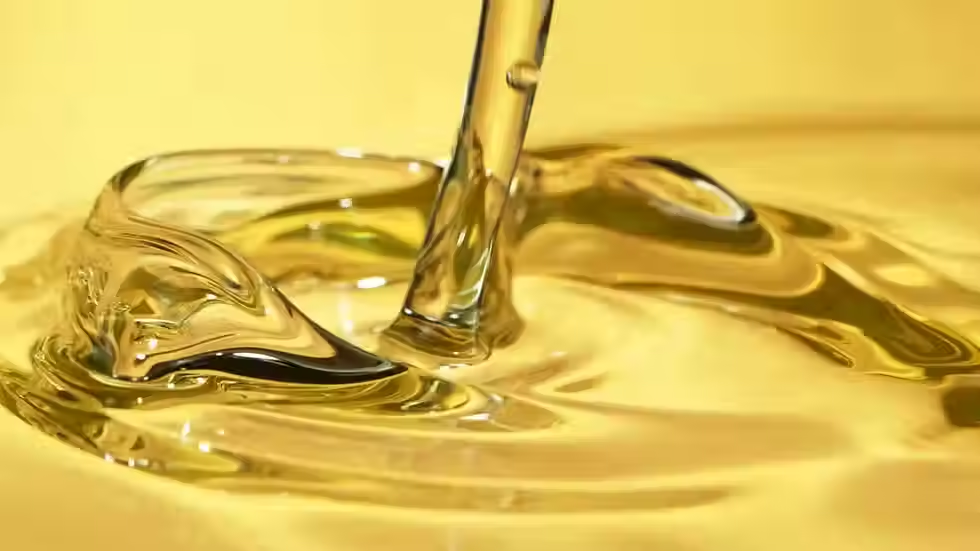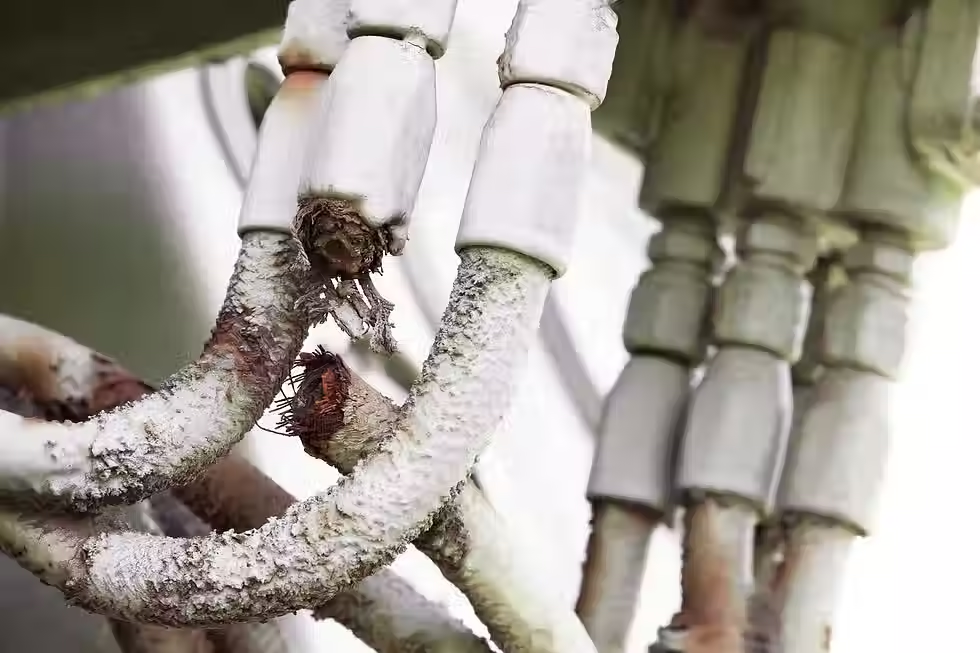Hydraulic Maintenance Checklist for 2026: Keep Your Systems Winter-Ready
- CTIS

- Nov 18
- 8 min read

Cold weather doesn’t stop production — but it can stop your hydraulics. As Houston manufacturers and field operators prepare for the temperature dips of early 2026, keeping hydraulic systems winter-ready means more than topping off fluid. It’s about preventing slow startups, leaks, cavitation, and costly downtime.
Hydraulic failures are often silent — until they aren’t. A small temperature change can thicken oil, stress seals, and reduce pressure efficiency. The fix? Preventive maintenance, guided by a detailed plan built for Texas’s unpredictable winter conditions.
This checklist brings together the best practices that Carbide Tooling & Industrial Supply (CTIS) field specialists and partner shops rely on to keep hydraulic systems strong all season long.
*For more seasonal insights on preparing your equipment for colder months, check out our blog, “Fall Into Efficiency: Pre-Winter Maintenance Tips for CNC and Hydraulic Systems.”
1. Start with a Full System Inspection
Before the first cold snap, perform a top-to-bottom inspection of every hydraulic circuit. Look for early signs of wear, corrosion, or damage that could worsen as temperatures drop.
Key inspection points:
Hoses and fittings: Check for cracks, abrasions, or bulges. Cold temperatures make rubber and synthetic hoses more brittle.
Seals and gaskets: Inspect for hardening or flattening. Replacing them early prevents fluid leaks and contamination.
Fluid lines and reservoirs: Make sure they’re clean, dry, and free of sludge or condensation.
Mounting brackets and clamps: Tighten all hardware — vibration and thermal cycling can loosen connections over time.
Pro tip: Precision matters in every hydraulic system, especially in aerospace engineering and automotive manufacturing, where small leaks or pressure loss can lead to major downtime. Keep a supply of replacement fittings and seals from trusted brands in our service areas, stocked by CTIS. Small parts can make or break uptime during peak winter production.
2. Test and Replace Hydraulic Fluids
Hydraulic oil is the lifeblood of your system, and it behaves very differently in cold weather. As temperatures fall, viscosity increases — meaning your pump has to work harder to push the same volume of fluid. That leads to cavitation, noise, and mechanical wear.
Winter-prep fluid checklist:
Test viscosity: Compare current oil performance to manufacturer specs using a viscometer or lab test.
Replace old or contaminated fluid: If it appears dark, milky, or has metal shavings, replace it immediately.
Use winter-grade or multi-viscosity fluids: Fluids like ISO 32 or blended synthetics perform better in cold startups.
Flush and refill with quality coolant and lubricant additives to extend life and reduce oxidation.
Recommended product: HydroCut coolant, available through CTIS, provides the lubricity and temperature control modern hydraulic systems demand — and it’s the same trusted formula many of our CNC machining supplies customers use to protect spindles, tooling & supply, and precision equipment year-round.
*For a closer look at the components and products that keep your systems performing under pressure, read our blog, “Guide to Hydraulic Supplies for Industrial Applications.”
3. Clean and Replace Filters
Filters are often the unsung heroes of hydraulic performance. Dirty or clogged filters restrict flow, increase system pressure, and can trigger false alarms or pump strain.
Filter maintenance steps:
Replace all suction, pressure, and return filters as part of your winter prep routine.
Inspect filter elements for signs of bypassing or collapsed media.
Use OEM-quality or CTIS-approved replacements for guaranteed compatibility.
Keep spare filters on hand — CTIS’s vendor-managed inventory (VMI) program ensures you always have critical consumables in stock, right alongside essentials like carbide cutting inserts and other precision tooling your operation depends on.
Quick tip: Label your filters with replacement dates. It’s an easy visual cue that helps maintain consistent service intervals across the team.
4. Check Hydraulic Pumps and Motors for Efficiency
Cold-starting puts significant stress on pumps and motors. If components are already near their wear limits, they may fail once temperatures drop.
Diagnostic checklist:
Check pump inlet pressure and case drain flow for signs of internal leakage.
Measure motor RPM and torque output against specifications.
Listen for abnormal noises — a whining or grinding tone often means cavitation or bearing wear.
Verify alignment between motor and pump couplings.
Hydraulic reliability is critical across industries like energy production and manufacturing — where downtime isn’t an option. If performance dips, CTIS can coordinate tool repair and regrinding through our local service network to restore precision without unnecessary replacements.
*To learn how premium components improve system performance and uptime, read our blog, “How Quality Hydraulic Supplies Enhance Efficiency.”
5. Inspect Valves and Control Systems
Valves are particularly sensitive to cold-weather performance. Thickened oil or minor debris can restrict spool movement, causing slow response or erratic actuation.
Maintenance essentials:
Clean valve housings with lint-free wipes and manufacturer-approved solvents.
Test pressure relief valves for proper set points.
Ensure solenoids and pilot controls respond cleanly.
Replace any aging or sticky valves with CTIS-supplied replacements from brands like Ladish Valves, built for industrial durability.
Pro tip: Add a small inline heater to keep valve bodies within ideal operating range during extended idle periods.
6. Examine Cylinders for Seal and Rod Wear
Hydraulic cylinders are among the first components to show cold-related wear. Lower temperatures can cause seal shrinkage and oil bypass, reducing force and efficiency.
Inspection checklist:
Extend and retract cylinders fully to check for smooth motion.
Look for fluid leakage at gland nuts or end caps.
Examine chrome rods for scoring, pitting, or corrosion.
Grease all pivot points and linkage joints with low-temp lubricant.
If you notice premature seal wear, contact CTIS — our maintenance & calibration team works with Houston manufacturers to source and replace critical cylinder components quickly, avoiding long lead times.
*To learn how to spot issues before they shut down production, check out our blog, “Avoid These 5 Common Hydraulic System Failures – And How to Prevent Them.”
7. Calibrate Pressure Gauges and Sensors
Precision isn’t optional in hydraulic systems. Even a small error in pressure readings can lead to overloading or premature component failure. Before winter, confirm every sensor and gauge reads accurately.
Calibration plan:
Compare readings against a calibrated reference gauge.
Replace gauges showing more than ±2% deviation.
Check electrical connectors for corrosion or moisture.
Verify that digital displays and PLC inputs correspond to actual system conditions.
The CTIS Advantage: we support calibration services through trusted local partners — keeping your hydraulic systems compliant, efficient, and ready for seasonal shifts. And when you need replacement gauges, fittings, or instrumentation fast, our fast tool order delivery ensures your shop stays on schedule without costly downtime.
8. Check Reservoirs, Tanks, and Breathers
Water condensation increases dramatically with temperature changes. A small amount of moisture in hydraulic oil can degrade viscosity, form sludge, and corrode internal components.
Preventive steps:
Drain and clean reservoirs before refilling with fresh fluid.
Replace or clean tank breathers to prevent dirt and humidity ingress.
Install desiccant breathers in high-humidity or outdoor environments.
Keep reservoir lids sealed — avoid opening them in humid weather.
Pro tip: CTIS offers custom hydraulic supplies and accessories — including breathers, fittings, and caps — to help maintain system integrity during winter months. We also provide a full range of welding supplies and shop essentials, giving Houston manufacturers one trusted source for everything that keeps their operations running.
*For insights on preventing downtime and protecting performance, read our blog, “Common Hydraulic System Failures and How the Right Supplies Can Prevent Them.”
9. Inspect Hydraulic Lines for Leaks and Abrasion
Leaks aren’t just messy — they’re costly, dangerous, and environmentally risky. Regular hose inspections are essential for winter safety and compliance.
Visual inspection guide:
Look for wet spots, oily residue, or staining near joints.
Check for chafing where hoses contact metal or each other.
Verify that all clamps and ties are intact.
Replace any hose older than three years or showing visible fatigue.
CTIS’s personal sales visits include on-site inspections where a rep can help identify weak points, suggest upgraded fittings, or discuss vending & automation options for hose management and replacement parts.
10. Test System Performance Under Load
After inspection and maintenance, test the system under actual working conditions. Cold startup is the true test of readiness.
System validation checklist:
Monitor temperature and pressure during startup.
Ensure pumps reach target PSI without excessive strain.
Watch valve and actuator response time.
Verify there’s no excessive noise or vibration.
If performance isn’t where it should be, CTIS’s tooling supply partnership programs include technical support, specialized tool design, and troubleshooting — helping you resolve hydraulic inefficiencies before they escalate into production delays.
*For step-by-step guidance on maintaining hydraulic performance, read our blog, “Hydraulic Oil Maintenance Checklist – Keep Your Equipment Running Smoothly.”
Winter Maintenance FAQs (2026 Edition)
Q: What’s the ideal hydraulic oil temperature for winter operation?
For most Houston-area systems, maintain oil between 70°F–120°F. Temperatures below 60°F can increase viscosity enough to cause sluggish performance and cavitation.
Q: How often should hydraulic fluids be replaced in winter?
Replace every 1,000–2,000 hours or sooner if oil analysis indicates contamination or oxidation. Frequent inspections during cold months help detect degradation early.
Q: Can I mix different hydraulic fluids for winter readiness?
Mixing is not recommended. Incompatible additives can cause foaming or seal degradation. Always flush and refill with a single, approved winter-grade fluid.
Q: What’s the best way to prevent condensation in reservoirs?
Use desiccant breathers and store equipment in temperature-controlled environments. Regularly drain small amounts from tank bottoms to remove accumulated moisture.
Q: How does CTIS help with hydraulic maintenance?
CTIS supports hydraulic operations across Houston with:
Same-day supply of hydraulic fittings, hoses, and valves
Vendor-managed inventory (VMI) to prevent shortages
Access to Hydrocut coolant and winter-grade fluids
On-site reviews through personal sales visits
Local expertise in maintenance & calibration
This integrated support keeps your hydraulic systems ready for the season — without costly downtime or delays.
Schedule Preventive Maintenance Before Temperatures Drop
Most hydraulic failures happen during startup after prolonged idle periods. Don’t wait for the first cold morning to perform maintenance. Create a pre-winter service calendar that includes:
Filter and fluid replacements
Line inspections
Valve and pump calibration
Pressure testing
Emergency spare parts ordering
CTIS can help you build and stock your winter maintenance kit — including seals, filters, fluids, and fittings — to ensure you’re always one step ahead. Backed by responsive customer service, local expertise, and the faces you know across Houston’s industrial community, CTIS delivers trusted brands like Regal Cutting Tools, Widin, Fullerton, Pearl Abrasives, Superior Abrasives, Welding Outlets Inc., and Tungaloy — giving your team the quality and consistency needed for reliable winter performance.Our team makes hydraulic maintenance straightforward, reliable, and Houston-tough.
*For quick answers to common maintenance and supply questions, explore our blog, “Hydraulic Supplies FAQ: Everything You Need to Know.”

Stay Winter-Ready with CTIS
Hydraulic reliability isn’t just about the right components — it’s about consistency, preparation, and trusted local support. As the Gulf Coast heads into another unpredictable winter, CTIS stands ready with the products, expertise, and service you need to keep every system performing under pressure — all backed by competitive pricing that helps Houston manufacturers stay efficient and profitable.
Hydraulic supplies and maintenance support
Vendor-managed inventory (VMI) programs
Our services include regrinding & coating and tool repair
Personal sales visits across Houston and the Gulf Coast
Learn more about us and how CTIS keeps Gulf Coast manufacturers running strong through every season. Book online or contact CTIS today to schedule your winter-prep consultation or request a quote. Keep your hydraulic systems ready, reliable, and Houston-tough — all winter long.




Comments